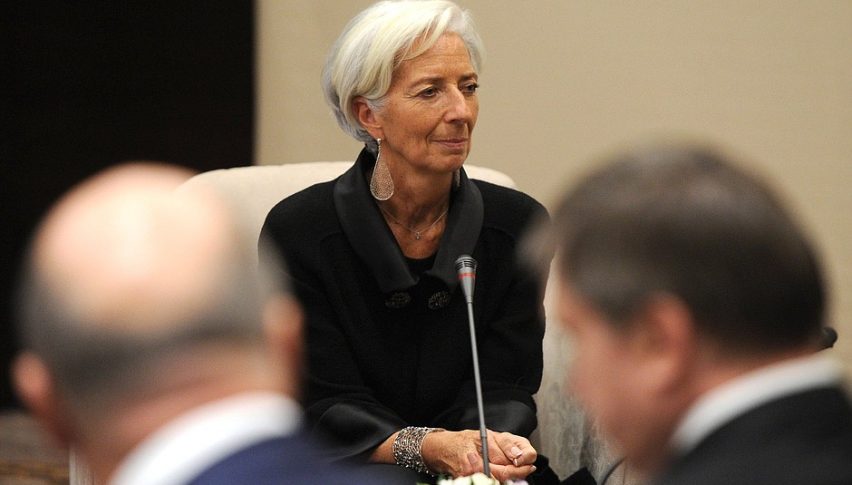Can USDCAD Move Above 1.43 After Today’s Canada CPI Report?
USDCAD has gained 8.5 cents since late September and it might climb above 1.43 today if Canadian inflation comes weaker than expected.

USDCAD has gained 8.5 cents since the last week of September and it might climb above 1.43 today if Canadian inflation comes weaker than expectations.

USD/CAD remains technically supported by the 20-day Simple Moving Average (SMA) on the daily chart, with the moving average pushing the lows higher. This technical support is reinforced by the Bank of Canada’s dovish stance, which has recently lowered interest rates by 50 basis points for the second time in a row.
Weak Canadian Economic Data Affecting CAD
Fundamentally, the Canadian dollar is facing challenges, including a rise in the unemployment rate by 3% in the first week of December. Additionally, GDP growth has been weak, with a stagnant August followed by a modest 0.1% growth in September. October’s preliminary estimate confirmed a similar marginal expansion. More concerning is the 0.4% contraction in GDP per capita in Q3, which is part of a broader trend observed in 2023 and 2024. These factors support the Bank of Canada’s cautious outlook.
USD/CAD Chart Daily – The 20 SMA Keeping Buyers in Control
Yesterday, USD/CAD pulled back after failing to maintain gains near 1.4270. The pair briefly surpassed the April 2020 high of 1.426, but momentum quickly faded. It then dropped below last week’s high of 1.4240 and found support around the 1.4220 level, before rebounding higher.
Buyers continue to hold control, and if today’s CPI data shows moderate inflation, the pair could rise towards 1.43. Conversely, if inflation data comes in stronger than expected and sellers take control, the next support target is around 1.4200. A break below this level would indicate a shift in momentum towards sellers.
BOC Macklem Comments at Greater Vancouver Board of Trade
- The global economy is expected to face more frequent shocks than desired.
- Key structural changes underway include deglobalization, demographic shifts, digitalization, and decarbonization.
- Collaboration with international partners is critical to shaping a resilient future.
- Enhancing analysis and ensuring monetary policy frameworks remain effective is a priority.
- The combination of higher sovereign debt, elevated long-term interest rates, and weaker economic growth is increasing global vulnerability.
- Inflation risks remain balanced, with concerns about both higher-than-expected and lower-than-expected outcomes.
- Rising wages paired with weak productivity could lead to higher inflation as businesses pass on costs.
- Subpar economic growth could pull inflation lower.
- Crisis tools must have clear objectives and defined conditions for discontinuation.
- Canada’s threshold for deploying extraordinary measures has always been high and should remain so.
Inflation Data and Bank of Canada’s Stance
The CPI year-over-year is expected to remain stable at 2.0%, with a slight increase of 0.1% month-over-month, up from the prior 0.4%. The Trimmed-Mean CPI is forecast to hold steady at 2.6% YoY, while the Median CPI is expected to dip slightly to 2.4% from 2.5%. The Bank of Canada has indicated that further rate cuts will depend on the economy progressing as expected, suggesting a more gradual pace of easing with 25-basis-point cuts ahead.
Canada Fiscal Update Highlights
- 2023/24 Deficit: Projected at C$61.9 billion, up from the April forecast of C$40 billion, breaching the fiscal anchor.
- Includes Indigenous contingent liabilities of C$16.4 billion and adjustments for COVID-19-related support.
- 2024/25 Deficit: Estimated at C$48.3 billion (1.6% of GDP), compared to C$39.8 billion in April.
- Debt-to-GDP Ratio:
- 2024/25: 41.9%, unchanged from April.
- Declining steadily to 38.6% by 2029/30.
- Deficit Projections:
- 2025/26: C$42.2 billion (vs C$38.9 billion in April).
- 2026/27: C$31.0 billion (vs C$30.8 billion in April).
- 2029/30: Narrowing to C$23.0 billion.
- Real GDP Growth Outlook:
- 2024: 1.3% (up from 0.7% forecast in April).
- 2025: 1.7% (vs 1.9% forecast).
- 2026: 2.1% (vs 2.2% forecast).
- 2027–2028: Stable at 2.0%–2.1%.
- Public Debt Charges:
- 2024/25: C$53.7 billion (down from C$54.1 billion in April).
- 2025/26: C$54.2 billion (down from C$54.9 billion).
USD/CAD Live Chart
- Check out our free forex signals
- Follow the top economic events on FX Leaders economic calendar
- Trade better, discover more Forex Trading Strategies
- Open a FREE Trading Account




